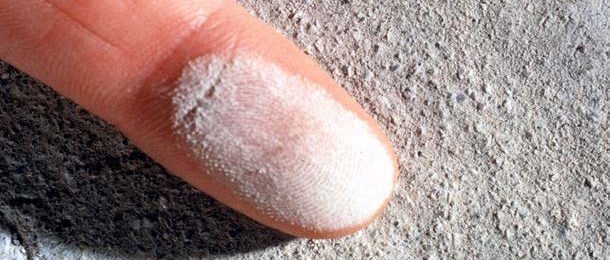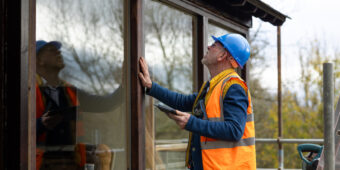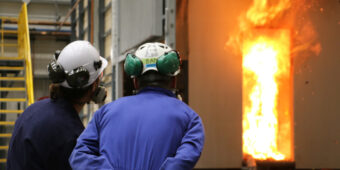It’s raining again
10 Dec 2019, Learn, Prove Your Know How, Technical

Wet weather is common at any time of year in most parts of New Zealand, making the damage caused by rain to freshly placed concrete a real possibility
The symptoms are dependent upon when in the placing process the rain arrived. If the concrete has been floated and trowelled, and is nearing setting, the damage may be limited to some marking of the surface.
If the rain arrives prior to trowelling, there is a real risk that the surface will, at a later date, start to dust. The image below shows a driveway where rain occurred during the finishing process and dusty surface has resulted. Over a period, the dusting surface was abraded in the wheel tracks, exposing the aggregate.
Why dusting occurs
The strength of concrete is directly related to the water/cement ratio. The higher the ratio (ie, the more water added), the weaker the concrete. When water, either from rain or the bleed water, is mixed into the surface during the finishing process, a very weak concrete layer is created.
Typically, this weak layer is 3-5 mm thick and the concrete below is usually sound. It is this weak surface layer that is the source of the dust created by surface abrasion.
What can be done to prevent it?
The simplest answer is to avoid placing concrete when there is a threat of rain. However, there are times when rain occurs despite the forecasts for good weather. In these instances, it pays to have a contingency plan. Under clause 7.1.3.2 of (NZS 3109 Concrete Construction), the contractor has a responsibility to protect freshly cast concrete from the effects of rain.
For trowelled surfaces, one option is to lay polythene over the concrete surface as soon as the rain starts, and then wait for it to cease. When the rain has stopped, the polythene should be rolled back from a small area at a time and then finished. Use the moisture in the slab to finish and avoid the addition of any water to the surface during the finishing process.
This process is repeated until the entire slab has been finished. Do not pull the polythene off the entire surface in one go, as invariably the surface will dry and become unfinishable. It is important to ensure that any water sitting on the top of the polythene is not discharged onto the concrete. Start the curing process as soon as possible after finishing.
If a prolonged period of rain has occurred, better results can be achieved by using a rotating plate compactor to bring the fat up to the surface then machine finish as normal. Pan floating may help if a rotating plate is not available.
For decorative concrete, particularly stamped concrete, potential practical contingency plans are limited, as there is only a relatively small window of opportunity to conduct the stamping process.
You have a dusting surface — what can be done?
The answer depends on the severity of the problem and how quickly remedial action is taken. For situations where the dusting problem is not severe, and the problem is addressed early, the surface may be saved using a dust proofer and surface hardener. These are typically clear silicate-based solutions that are poured and broomed/squeegeed into the surface.
These solutions may not save a moderate to severe dusting surface, but as the cost is modest compared to other options, it may be worth trialling. If the surface has been left for a period of time and wear has exposed the aggregate, this solution is no longer available, as it will not hide the aggregate, so it is important to both acknowledge the problem and take action early.
Another remedial solution is to grind off the weak surface layer. This can create a rather attractive terrazzo effect. However, given that the floor was not intended to be ground, it would be unreasonable to expect an even distribution of the aggregate.
If a terrazzo appearance is not desired, then the weak surface layer can be removed by grinding, and a cementitious topping placed over the surface. These toppings can often be coloured and textured.
In some instances, the only practical solution is to rip the concrete up and start again.
Register to earn LBP Points Sign in
2 Comments
Leave a Reply
You must be logged in to post a comment.





Concrete surfaces
concrete